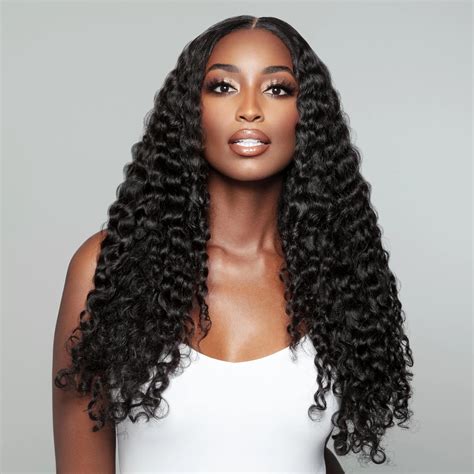Introduction
Burmese curly hair is a stunning and distinctive hair type that originates from the Burmese people of Southeast Asia. Characterized by its tight, springy curls, it is a mesmerizing feature that adds volume and texture to any hairstyle.

Prevalence and Distribution
According to the International Society for Hair Restoration Surgery (ISHRS), Burmese curly hair is found primarily among the Burmese population, with an estimated prevalence of 25-30%. It is also present in small percentages among neighboring populations in Thailand, Laos, and China.
Formation and Genetics
The formation of Burmese curly hair is determined by genetic factors. The mutation of the trichohyalin gene, specifically the TCHH gene, is believed to be responsible for the production of the distinctive curly hair pattern. Trichohyalin is a protein that helps shape hair shafts and its mutation disrupts this process, leading to the characteristic corkscrew-like curls.
Physical Characteristics
1. Tight Curls: Burmese curly hair is renowned for its tight, spiral curls that range from ringlets to kinky coils. The curls are often defined and springy, creating a voluminous and textured effect.
2. Elasticity: The curls of Burmese hair are highly elastic, allowing them to bounce back into shape after being stretched or pulled. This elasticity contributes to the hair’s resilience and durability.
3. Texture: The texture of Burmese hair is typically coarse and dry, with a slightly rough surface. This texture can make the hair prone to frizz and tangles, requiring additional care and conditioning.
Benefits and Applications
1. Volume and Texture: Burmese curly hair instantly adds volume and texture to any hairstyle. Its unique corkscrew shape creates a dynamic and eye-catching look that complements a variety of face shapes and lengths.
2. Versatility: Burmese curly hair is incredibly versatile and can be styled in countless ways. From tight ringlets to loose waves, it can be blown dry, straightened, or left to air dry for different looks.
3. Cultural Significance: Burmese curly hair holds cultural significance for the Burmese people, symbolizing beauty, strength, and resilience. It is often associated with traditional hairstyles and cultural practices.
Pain Points and Motivations
1. Frizz and Tangling: The coarse texture of Burmese curly hair can make it prone to frizz and tangles, especially in humid environments. This can be a source of frustration and require additional effort to manage.
2. Maintenance: Burmese curly hair requires regular maintenance to keep it healthy and looking its best. Frequent conditioning, detangling, and appropriate styling products are essential to prevent damage and enhance its natural beauty.
Tips and Tricks
1. Regular Deep Conditioning: Deep conditioning treatments every 1-2 weeks can help restore moisture and nourishment to Burmese curly hair, reducing frizz and tangles.
2. Detangling with Care: Use a wide-toothed comb or detangling brush to gently remove tangles, starting from the ends and working your way up.
3. Avoid Over-Brushing: Excessive brushing can damage Burmese curly hair, causing breakage and frizz. Brush it gently only when necessary.
Common Mistakes to Avoid
1. Shampooing Too Often: Over-shampooing can strip away natural oils, leading to dryness and frizz. Aim to wash your hair 2-3 times per week.
2. Using Harsh Products: Avoid using products that contain sulfates or alcohol, as they can further dry out Burmese curly hair. Look for natural, moisturizing products tailored for curly hair types.
Applications for Burmese Curly Hair
The unique characteristics of Burmese curly hair present opportunities for innovative applications across various industries:
1. Haircare Technology: Advancements in haircare technology can develop specialized products and treatments designed specifically for Burmese curly hair, addressing its unique needs and enhancing its health and appearance.
2. Fashion and Beauty: Burmese curly hair can inspire hair accessories and styling tools that cater to its texture and volume, revolutionizing the fashion and beauty industry.
3. Cultural Preservation: Preserving traditional hairstyles and cultural practices associated with Burmese curly hair can promote cultural diversity and heritage.
Conclusion
Burmese curly hair is a captivating and distinctive trait that adds beauty and texture to any hairstyle. Its unique characteristics present challenges and opportunities for maintenance, but with proper care and styling, it can be a source of pride and cultural expression. Understanding the characteristics and applications of Burmese curly hair enables us to appreciate its beauty and develop innovative solutions to enhance its health and appearance.
Tables
Table 1: Prevalence of Burmese Curly Hair
| Region | Prevalence |
|---|---|
| Burma | 25-30% |
| Thailand | 5-10% |
| Laos | 2-5% |
| China (Yunnan) | 1-2% |
Table 2: Physical Characteristics of Burmese Curly Hair
| Characteristic | Description |
|---|---|
| Curl Type | Tight spirals to kinky coils |
| Elasticity | High |
| Texture | Coarse and dry |
Table 3: Motivations for Maintaining Burmese Curly Hair
| Motivation | Description |
|---|---|
| Cultural Identity | Express cultural heritage |
| Aesthetic Appeal | Enhance beauty and attractiveness |
| Personal Confidence | Boost self-esteem and confidence |
Table 4: Tips for Caring for Burmese Curly Hair
| Tip | Description |
|---|---|
| Regular Deep Conditioning | Restore moisture and nourishment |
| Detangling with Care | Gently remove tangles without damage |
| Avoid Over-Brushing | Minimize breakage and frizz |
